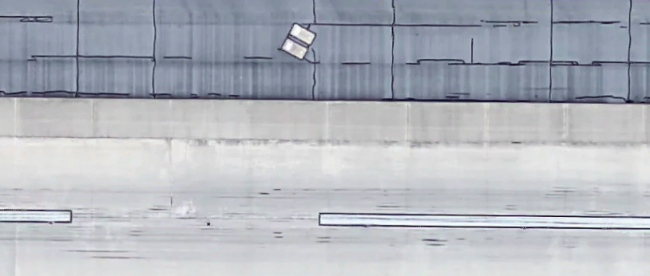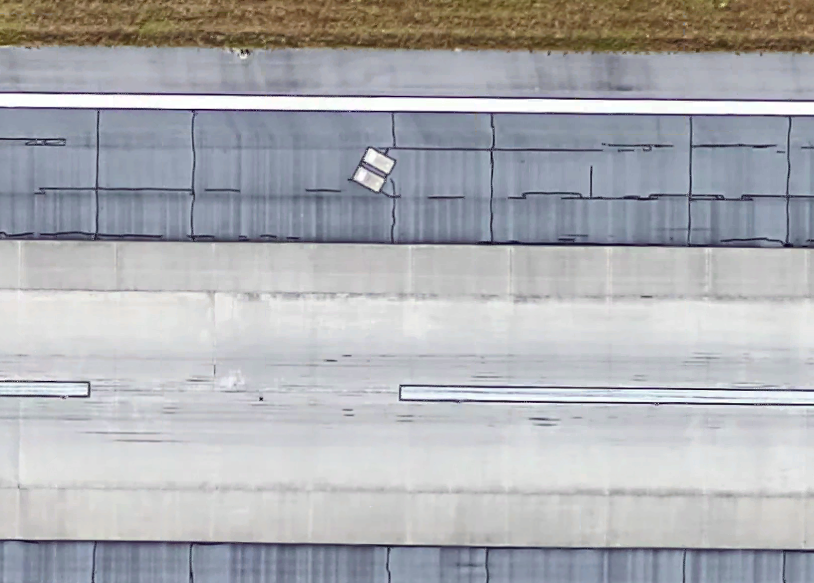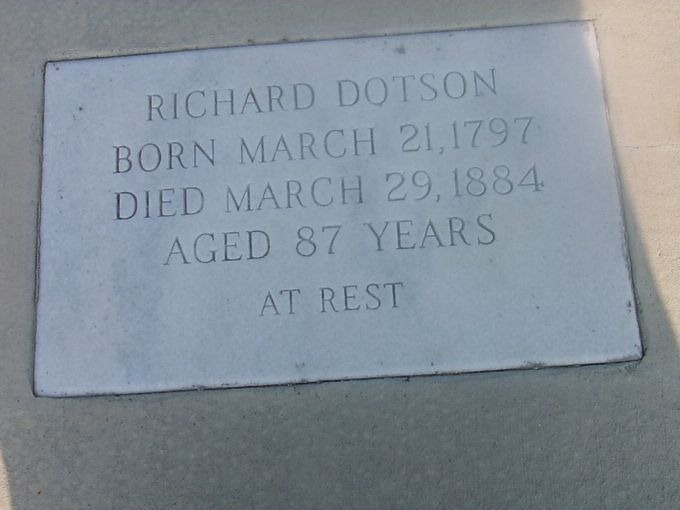The Gravesite That Sees a Lot of Flights

The general rule about graveyards is “leave them alone.” Be it out of respect for the dead, fear of the supernatural, community objections, or bad juju in general, we tend not to build on top of them.
That’s what makes the image below so weird.

That’s a satellite view glimpse at part of the Savannah/Hilton Head International Airport in Georgia, courtesy of Google Maps. (Here’s a link if you want to check it out yourself.) It’s the major airport for southeastern Georgia; the airport as a whole handles nearly 90,000 flights servicing more than two million total passengers each year. There are two runways; pictured above is part of the east/west runway, Runway 10/28.
The little, light-grey rectangles? They are grave markers.
When the airport opened in 1932 (then as “Savannah Municipal Airport”), the entire facility was much smaller than it is today. And the runways were no exception. During World War II, the Army took over the airport and, as part of its efforts to increase capacity, expanded Runway 10. To do so, the government had to buy up some surrounding farmland, and in this case, that was a problem.
The land the government wanted was owned by the Dotsons, a family which had lived in and farmed the area for generations. When the family matriarch, Catherine, died in 1877, the Dotsons created a family plot on the farm. When her husband, Richard, died seven years later, the family buried him alongside his wife of 50 years. Over the subsequent years, the area became the family’s multi-generational cemetery, becoming a final resting place for roughly 100 people (many of whom were slaves).
The runway expansion plans disrupted that tradition. The heirs to the Dotson farm agreed to move most of the graves — if the government footed the bill, which it gladly did given the wartime needs. The relocation of graveyards for airplane runways isn’t all that uncommon — if you’re going to build an airport, you’re going to put it in an unpopulated area, and there are fewer places less populated than gravesites, after all. But in this case, not all the bodies moved; the remains of Catherine and Richard stayed put. Atlas Obscura explains why, and what happened next:
Citing the fact that their ancestors would have wanted to stay on the land they worked so hard to cultivate and purchase, the surviving Dotson relatives refused to allow Richard and Catherine to be moved. Since it is illegal in America to transfer buried remains without the consent of next of kin, the airport did the only thing they could and simply paved over them. However, far from a heartless steamrolling, two headstones were placed over the graves, laid flat with the runway.
The result is the two headstones above. Here’s one close up below:

The Savannah airport is the only one with a known grave (two, in this case) on its runways. Don’t feel bad about disturbing the gravesite if you fly into Savannah, though. You won’t. As Savannah Now explains, “the markers are near the runway shoulder, [so] planes really don’t roll over the site, just past it.”
Bonus fact: The reason the runway above is “Runway 10/28” even though there are only two runways is a practical one: it marks the runway’s heading — just multiply by 10. In this case, “Runway 10” has a heading of 100 degrees (from true north). The other side of the runway is labeled 28, as planes coming from that direction enter with a heading off by 180 degrees.
From the Archives: Until Death Do Us Reunite: Two graves, separated by a wall, but still connected. Like a real-life Romeo and Juliet.
